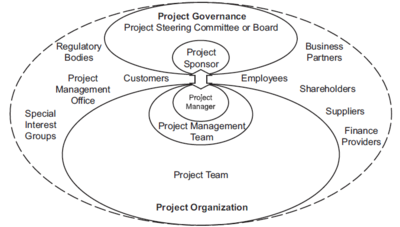Stakeholder management
Abstract
The prerequisite for creating a successful project, program, or portfolio is to identify the views of different actors. A key element is, therefore, to ensure good stakeholder management. For all projects, programs, or portfolios, it is crucial that the stakeholder's needs within communication, commitment, and systematic management are handled correctly. The purpose of manage stakeholders is to give appropriate understanding and attention to stakeholders' needs and expectations. This process includes activities such as identifying stakeholder concerns and resolving issues.[1]
Strong stakeholder management enables better cooperation with other actors and thus ensures that the interests of all parties are satisfied. To ensure strong stakeholder management, there are several models and tools that can be used in all types of projects. This article explains how stakeholder management is used in practice. There will also be made an in-depth analysis of individual key models and a discussion about possible limmations that can occurs by using these models.
Stakeholder classification and organization
In a project, The stakeholders are placed in different subcategories. The purpose is to create an overview of the project participants. A distinction is made to identify the internal and external stakeholders and their roles in the different phases of the project. It is therefore important to classify each stakeholder. Figure xx shows an overview of a classic organization chart of a project team and a steering group. The project manager is responsible for the project team, which can vary in size depending on the project scope and complexity. The project team must be able to provide the necessary professional competence to solve technical problems in connection with the project. The project manager's responsibility is to pass on the decisions that are discussed in the steering group to the project team. The steering group helps to set requirements for the project's quality, finances, and general project development. In this organizational structure, there are some other stakeholders who contribute other essential competencies and knowledge. These stakeholders are found in the outer circle of the project organization as shown on the figure. These actors can, e.g., be finance providers, business partners, and customers.
Stakeholder analysis
Project managers can use the stakeholder analysis to identify the key actors and to assess their knowledge, interests, positions, alliances, and importance related to their needs. This allows the project managers to interact more effectively with key stakeholders and to increase support for the project. By applying this analysis tool in project planning, the project managers can detect and act to prevent misunderstandings, and the project is more likely to be a success.[1]
Cite error:
<ref> tags exist, but no <references/> tag was found
